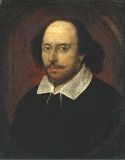 Last Sunday, I had the pleasure to attend a performance of Shakespeare’s Richard III at the Genesian Theatre in Sydney. A friend of mine, who has a subscription to this theatre, knew of a spare ticket and immediately thought of me and my interest in Richard III.
Last Sunday, I had the pleasure to attend a performance of Shakespeare’s Richard III at the Genesian Theatre in Sydney. A friend of mine, who has a subscription to this theatre, knew of a spare ticket and immediately thought of me and my interest in Richard III.
The Genisian Theatre is a non-professional group, named after the patron saint of actors, St Genesius, and is operating from a historic church. The term ‘non-professional’ might be a bit misleading as the programme tells us that for example Baz Luhrmann, Bryan Brown and John Bell are alumni of this theatre.
This production was directed by Gary Dooley, who had lately been working in Northampton in the UK. Another example of the serendipity we have seen in the whole project of finding Richard’s remains: he was offered the position at the same time as Richard’s remains were found in Leicester.
At the general meeting of the NSW Branch the day before I saw this Richard III, our speakers had talked about ‘Richard III in movies’, which had been serendipitous as well, as it allowed me comparisons. Like the McKellan film version, this production was set in a 1940s England. You can find a short YouTube clip of Gary Dooley talking about his production here.
The title character was played by Roger Gimblett, who dominated the stage, both physically – he was easily the tallest and most strongly built actor in the cast – as well in his performance. He had all the attributes of Shakespeare’s baddie: a substantial hump, one arm immobile and in a sling, and limping around the stage. Of course, we now know that the real Richard was completely different, as well as younger. And somehow I could not keep recent events out of my thoughts: when Richard says in the evening before the Battle of Bosworth “Up with my tent. Here I will lie tonight, but where tomorrow?” (Act 5.3), I wanted to shout “Under a carpark!”
Another mentionable performance was that of Dominic McDonald, whose Buckingham was wonderfully flamboyant, complete with a cigarette nearly constantly in his fingers (which interestingly never seemed to get any shorter).
Surprisingly, the princes were played by actors with the upper half of life-size dolls strapped to their bodies. I have to admit that I found this difficult to explain. Possibly it was to symbolise that they are not individual characters, but just objectified obstacles in Richard’s way to the throne.
It might have been my Ricardian bias, but after all the killing and general deviousness Richard had displayed throughout, I could not help but feel sorry for him during his sleepless night before the Battle of Bosworth with a bottle of red wine and ghosts haunting him.
On the other hand Richmond (Patrick Magee) appears as the superstar, giving his rousing speech on a radio. However, his speeches seemed not to reflect his true feelings, while his finishing speech in spite of all its conciliatory words – rather like Richard’s earlier speech to the Mayor and Citizens (Act 3.7) – appeared like spin and even had a certain menacing aura about it, as if there was really very little difference between the two. Or was this just a bit of wishful thinking on my part?
As this is a relatively small theatre, many actors played two or more roles. It was probably historically quite appropriate to have Patrick Magee play both Richmond and the Bishop of Ely, John Morton. Earlier in the play, he had also played Dorset and it was amazing how different he was in each role. Dorset was a lanky youth, Ely a churchman of some standing and Richmond the superstar.
Several of our branch members had attended an earlier performance on 10 March, which was followed by a panel discussion featuring the director, Gary Dooley, the actor playing Richard (Roger Gimblett) and our branch secretary Julia speaking on behalf of the historical Richard.
The Genesian Theatre is well aware of the difference between the stage and the historical character. Gary states in the programme that the play “was never intended to be a history lesson. If you want to find out about the historical character, read a history book” – or you could give the Richard III Society a try! In the foyer there is also an information board with information on the historical Richard, with a picture of the facial reconstruction.
A big thank you to Elaine for inviting to this memorable experience!
Tags: Richard III, Shakespeare

[…] plays, even if copped quite some disbelief on social media when I revealed that I watched his Richard III. Shakespeare’s plays are great on stage, that’s what they have always been intended […]